Shinagawa Station Shinkansen: Tickets, Platforms & Haneda Airport Access
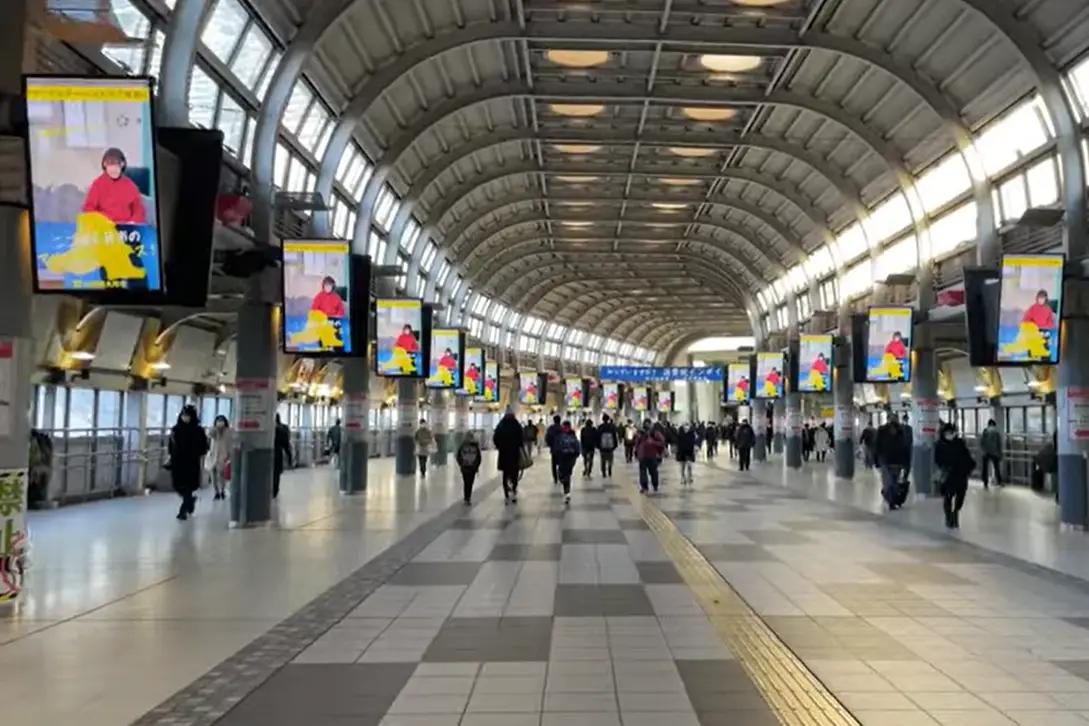
Shinagawa Station is one of Tokyo’s key transportation hubs, conveniently located in the city’s southwest. It offers easy access to Haneda Airport and smooth connections to western Japan via the Shinkansen.
With modern facilities and multilingual support, the station is especially convenient for international travelers.
This guide will help you navigate Shinagawa Station’s Shinkansen services—from booking tickets to finding your platform and exploring nearby destinations like Kyoto and Osaka.
Shinagawa Station Shinkansen Overview
Difference between Shinagawa Station and Tokyo Station
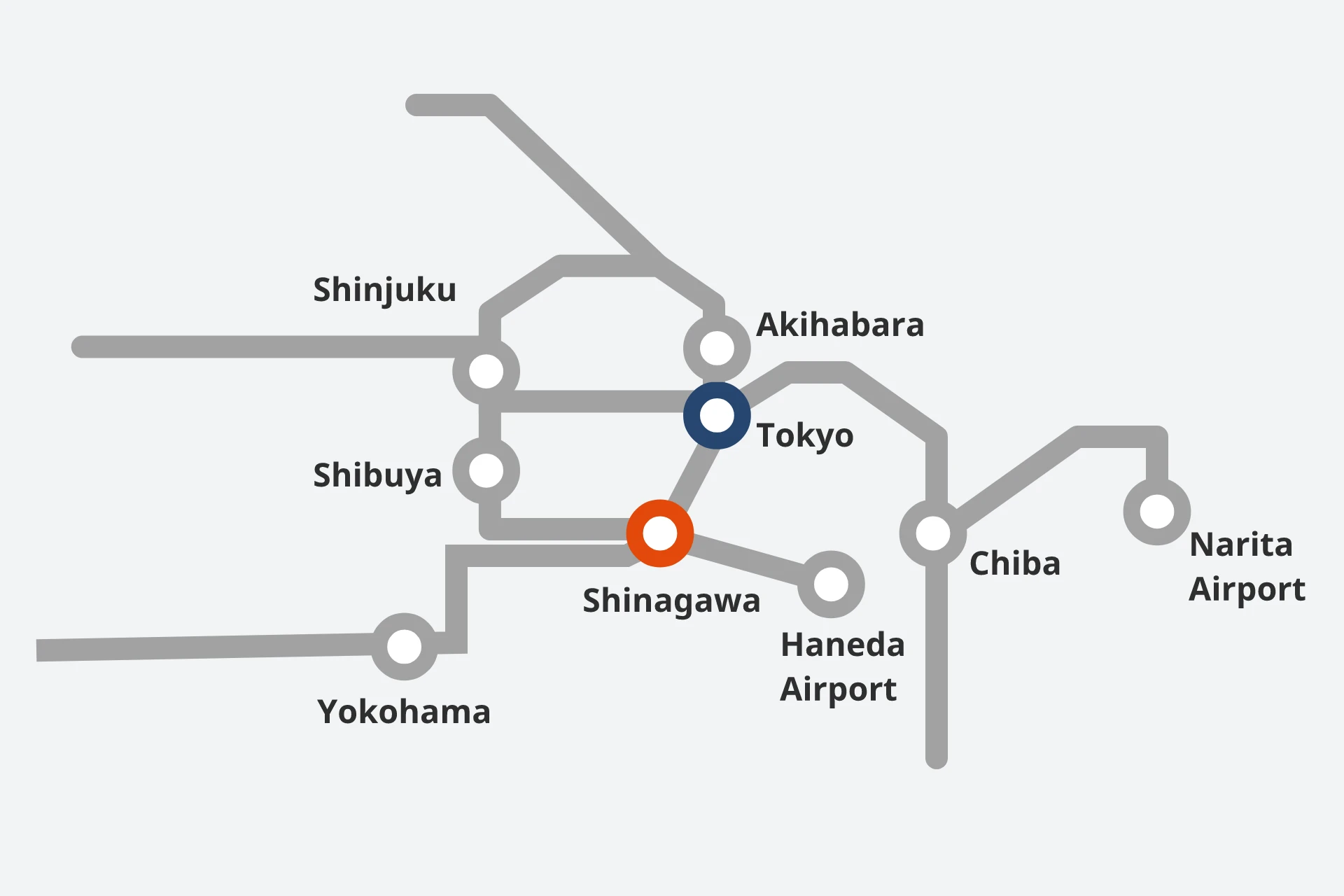
While both stations are in Tokyo and serve the Tokaido Shinkansen, Tokyo Station stands out as a central transportation hub, whereas Shinagawa Station offers different advantages for travelers.
Tokyo Station:
- Located in central Tokyo with more frequent Shinkansen departures and connections
- Larger station complex with extensive dining and shopping options
- Tends to be busier with longer queues, especially during peak periods
Shinagawa Station:
- Positioned in southwestern Tokyo with superior connections to Haneda Airport
- More compact, manageable layout with easier navigation and quicker transfers
- Generally less crowded with modern facilities designed for international travelers
Why Shinagawa Station?
Shinagawa Station has become increasingly popular among foreign travelers for several compelling reasons. The station provides excellent access to Haneda Airport, just 15 minutes away via the Keikyu Line, making it particularly convenient for travelers with tight schedules or heavy luggage.
As a major stop on the Tokaido and Sanyo Shinkansen lines, Shinagawa offers convenient high-speed rail access to popular destinations such as Kyoto, Osaka, and Hiroshima. The station maintains a manageable size while offering comprehensive services including multilingual signage, tourist information centers, coin lockers, dining and shopping options.
Shinkansen Lines and Train Types
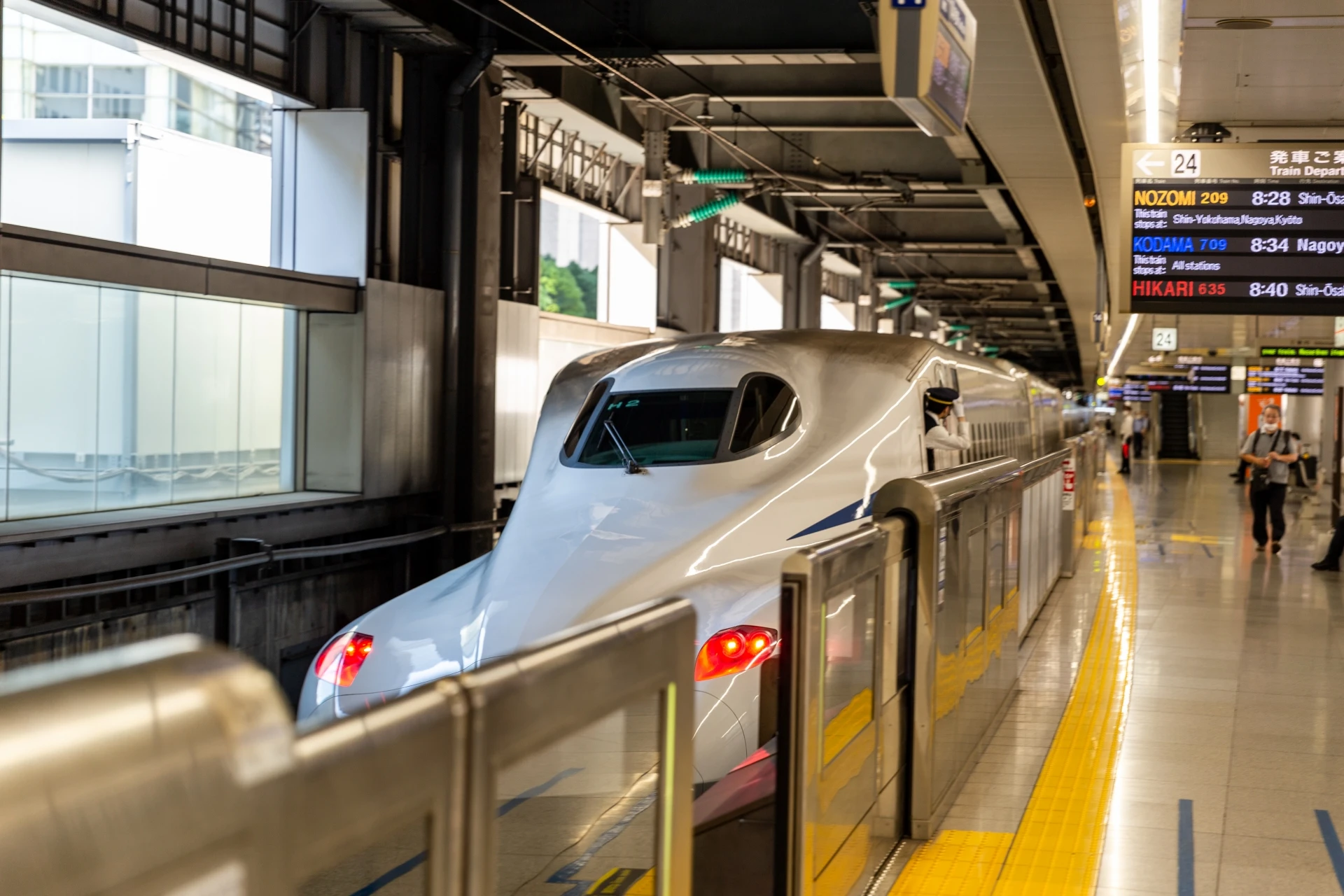
Shinagawa Station serves as a crucial stop on the Tokaido Shinkansen, Japan's busiest bullet train line connecting Tokyo with western Japan. The station handles three main types of Shinkansen services, each offering different travel speeds and stops.
- Nozomi trains represent the fastest service, making limited stops and reaching Osaka in approximately 2.5 hours. These trains are ideal for travelers prioritizing speed over cost, though they require regular tickets as Japan Rail Pass holders cannot use this service.
- Hikari trains offer a good balance between speed and accessibility, stopping at major cities along the route. These trains take slightly longer than Nozomi but are included in the Japan Rail Pass, making them popular among budget-conscious travelers.
- Kodama trains stop at all stations along the Tokaido line, providing access to smaller cities and towns. While slower than other services, these trains offer scenic views and connections to destinations not served by faster trains.
Many Nozomi and some Hikari and Kodama services continue directly onto the Sanyo Shinkansen, providing through service to destinations in western Japan, including Hiroshima and Hakata.
How to Buy Shinkansen Tickets at Shinagawa Station
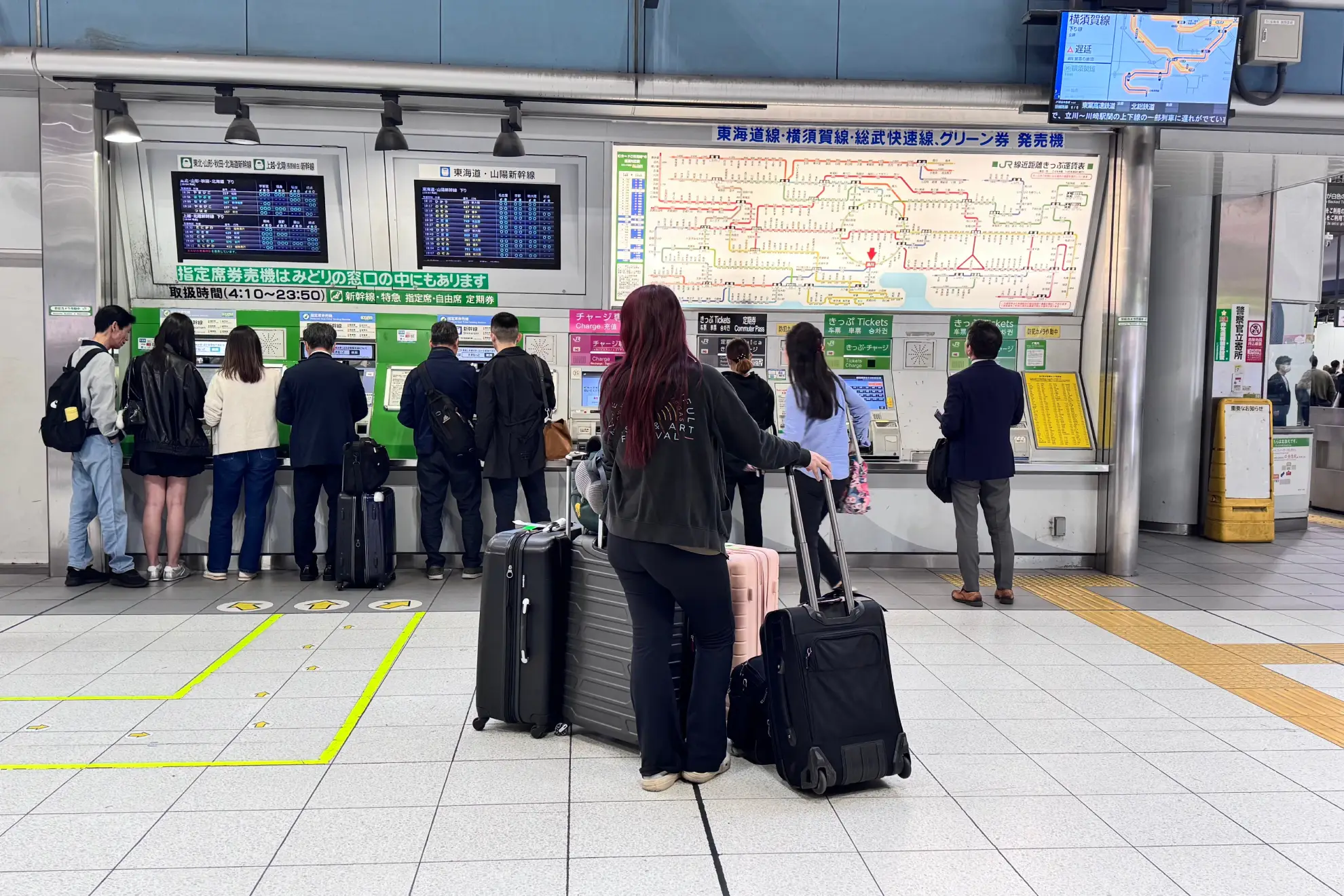
Online Booking
For the most convenient ticket purchasing experience, booking through Japan Bullet Train is highly recommended. This online service allows you to secure your seats before arriving at the station, eliminating the stress of long queues and potential sold-out trains during peak travel periods.
The service offers multilingual support and accepts international credit cards, making it accessible for foreign travelers. After completing your booking, you'll receive a QR code that can be exchanged for physical tickets at the station. This system is particularly valuable during busy seasons when reserved seats sell out quickly.

JR Ticket Counters and Machines
Shinagawa Station offers ticket counters and machines for buying Shinkansen tickets. The JR Ticket Office ("Midori-no-madoguchi") has multilingual staff to assist with seating or transfers.
Ticket machines are faster for simple bookings, supporting English and accepting IC cards or cash. Both reserved and non-reserved seats are available, but reserving is recommended during peak hours.
Using the Japan Rail Pass
The Japan Rail Pass remains one of the most cost-effective ways to travel extensively by Shinkansen and other JR trains. At Shinagawa Station, you can exchange your pass voucher at the JR Ticket Office (Midori no Madoguchi), where staff can assist with questions and initial seat reservations.
Pass holders can use Hikari, Kodama and Nozomi Shinkansen trains. The pass also covers all local JR lines at Shinagawa Station.
Shinagawa Station Map and Transfers
Shinkansen Ticket Gates and Platforms
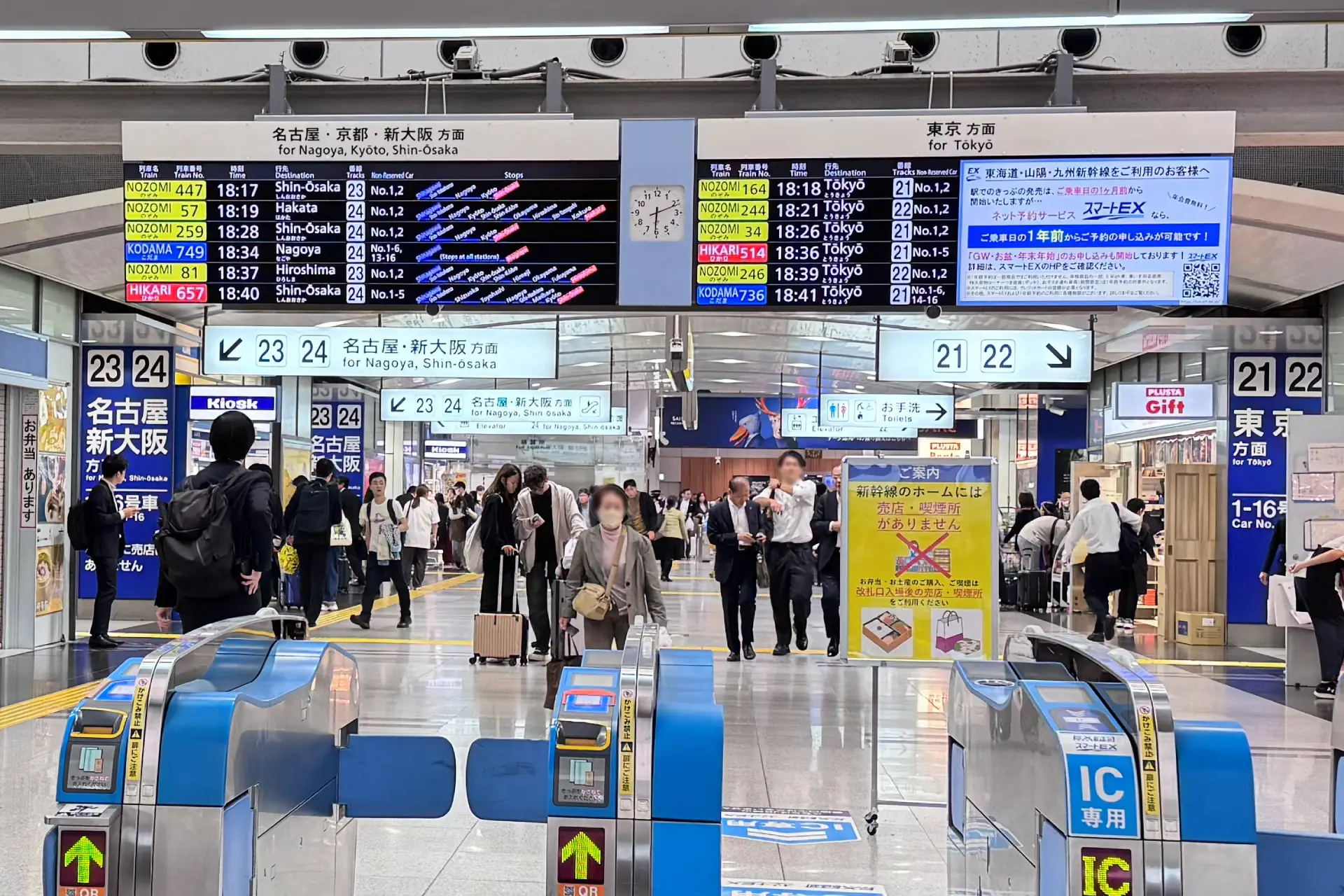
Shinagawa Station's Shinkansen area is located on the upper level, and the ticket gates are positioned on the east side of the central concourse, near the Konan Exit. However, these gates can be accessed from both the east and west sides of the station.
The platforms are numbered 21 through 24:
JR and Keikyu Line Transfer Tips
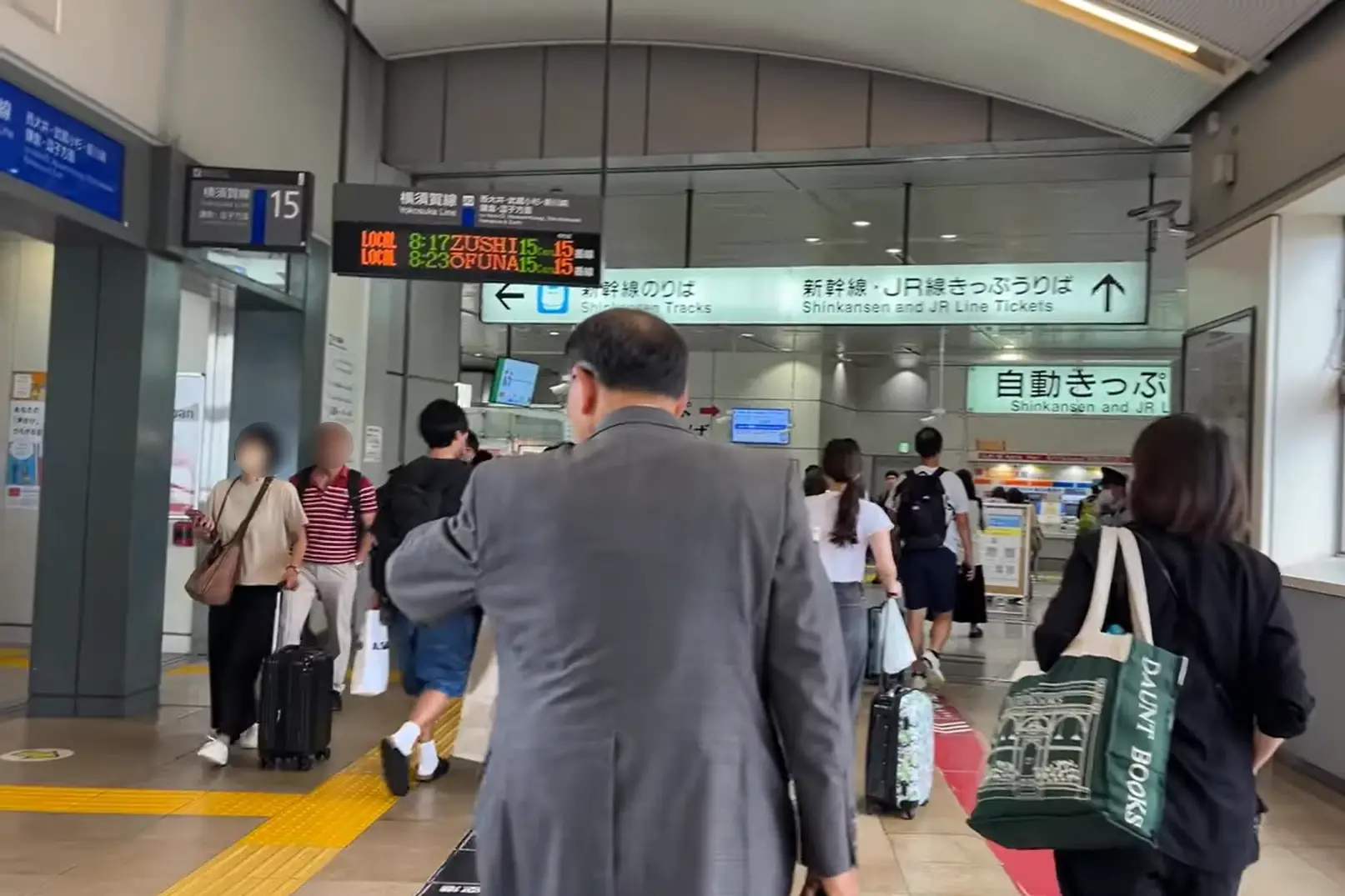
Transferring between the Shinkansen and other JR lines at Shinagawa Station is straightforward thanks to the station's integrated design. The Shinkansen platforms connect directly to the main concourse, where you can easily access JR lines such as the Yamanote Line and Keihin-Tohoku Line.
For Keikyu Line connections, especially to Haneda Airport, follow the red Keikyu signs toward the Takanawa (West) side of the station. The transfer typically takes 5–10 minutes, depending on your starting point and destination platform. During peak hours, allow extra time for crowded conditions and possible delays.
Note: You will need to exit the Shinkansen/JR ticket gates and enter the Keikyu ticket gates. Using an IC card (such as Suica or PASMO) makes transfers faster and more convenient.
Getting to Shinagawa Station
From Haneda Airport
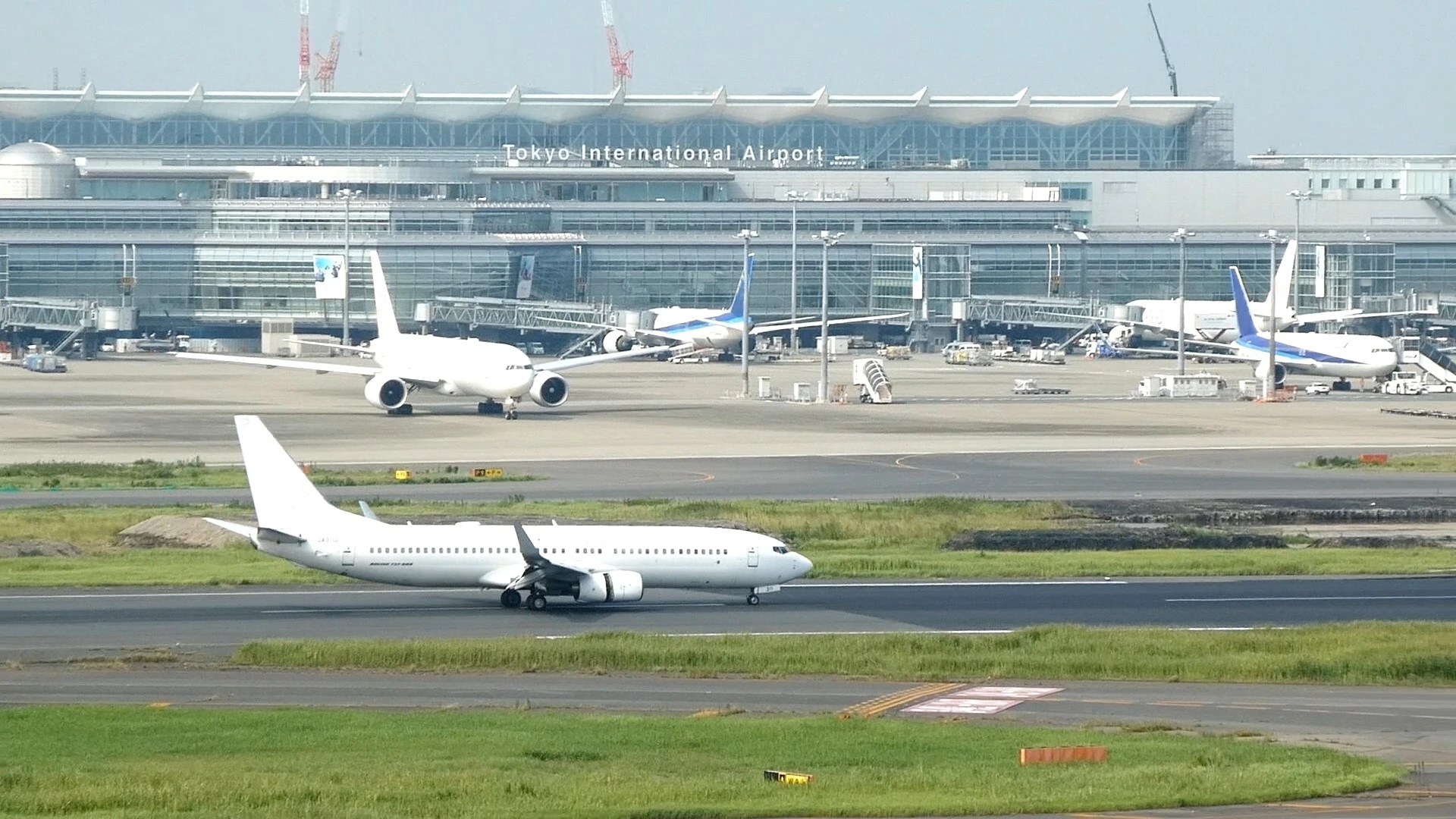
The journey from Haneda Airport to Shinagawa Station ranks among Tokyo's most convenient airport connections. The Keikyu Line provides direct service with multiple train types, including Airport Express and Limited Express services that complete the journey in approximately 15 minutes.
Tickets can be purchased at the airport terminal or using IC cards like Suica or Pasmo. The trains run frequently throughout the day, with services available from early morning until late at night. This connection makes Shinagawa Station particularly attractive for travelers with international flights through Haneda.
From Narita Airport via Keisei Ueno
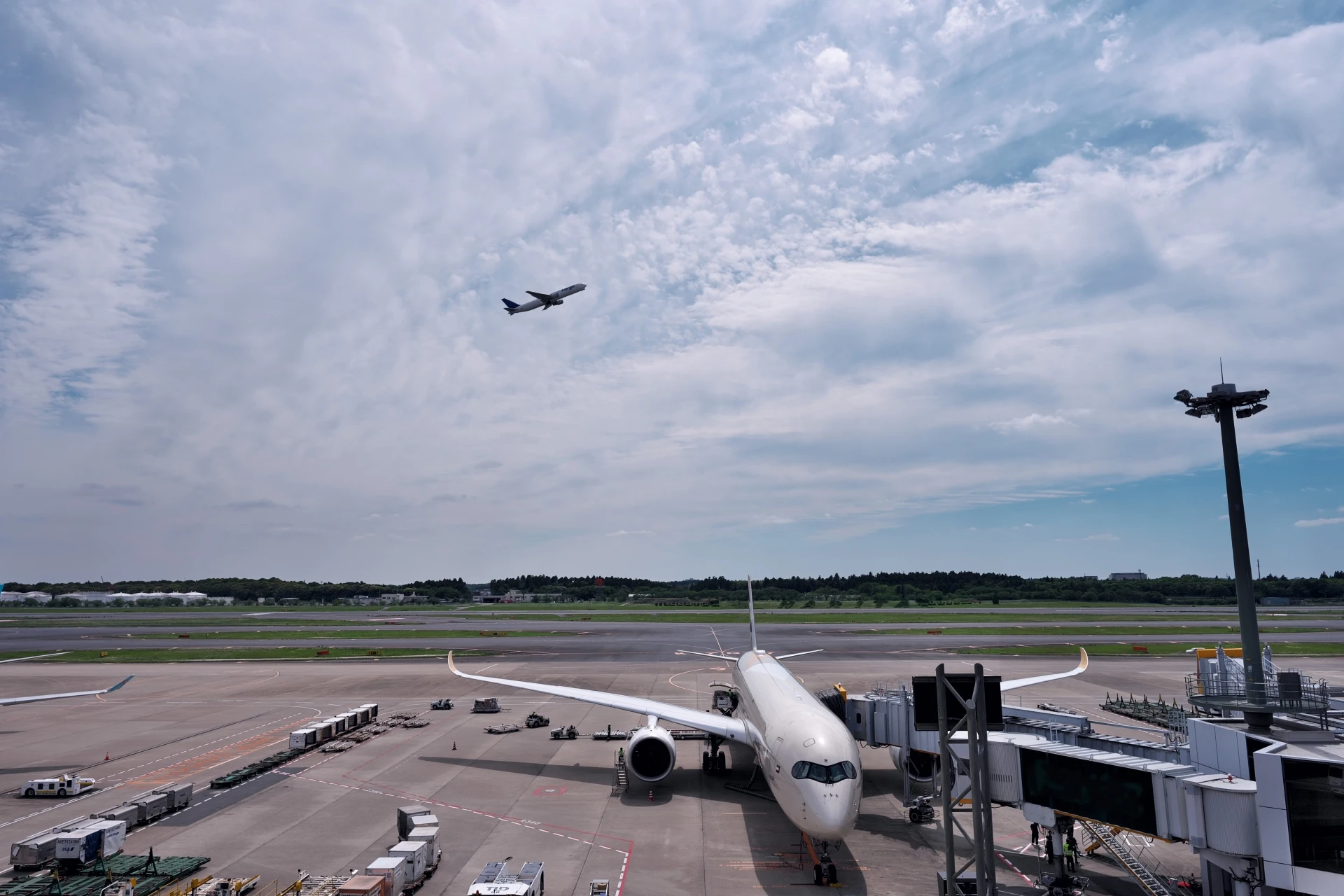
Traveling from Narita Airport to Shinagawa Station typically involves a transfer through central Tokyo. One convenient option is to take the Keisei Main Line to Ueno Station, then transfer to the JR Yamanote Line for the journey to Shinagawa. This route provides good access for those staying in or passing through the Ueno area.
Alternatively, some Narita Express (N’EX) trains offer direct service to Shinagawa Station, though not all trains stop there. Be sure to check the schedule in advance, as direct N’EX services may be limited at certain times of day.
From Tokyo Station
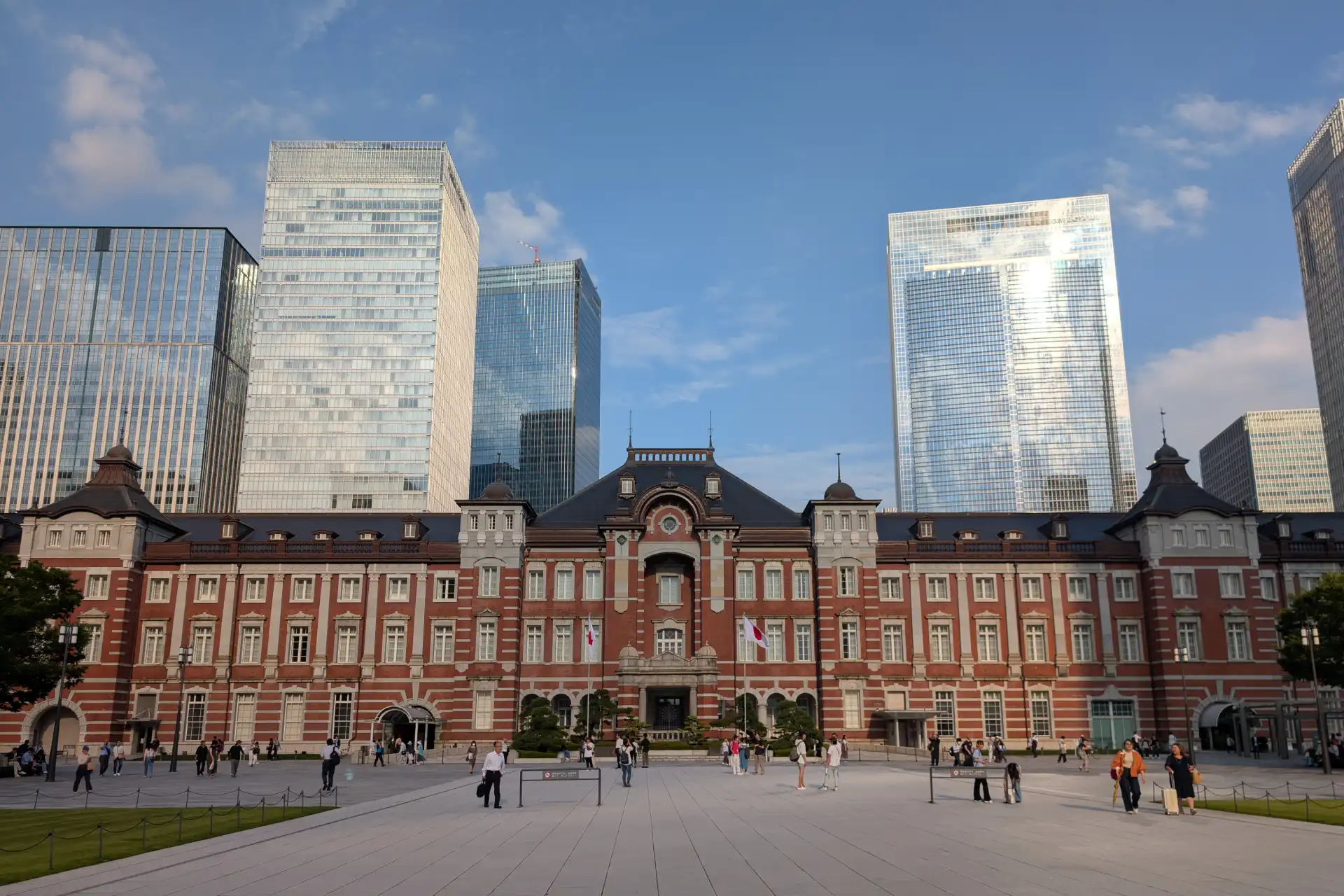
The connection between Tokyo Station and Shinagawa Station is simple and frequent. Both the JR Yamanote Line and Keihin-Tohoku Line provide direct service, with trains departing every few minutes throughout the day. The journey takes approximately 10 minutes and costs around 160 yen with an IC card.
This short distance makes it easy to choose between the two Shinkansen stations based on your specific needs. Tokyo Station offers more Shinkansen departures, while Shinagawa Station provides better airport access and shorter lines.
From Shinjuku Station
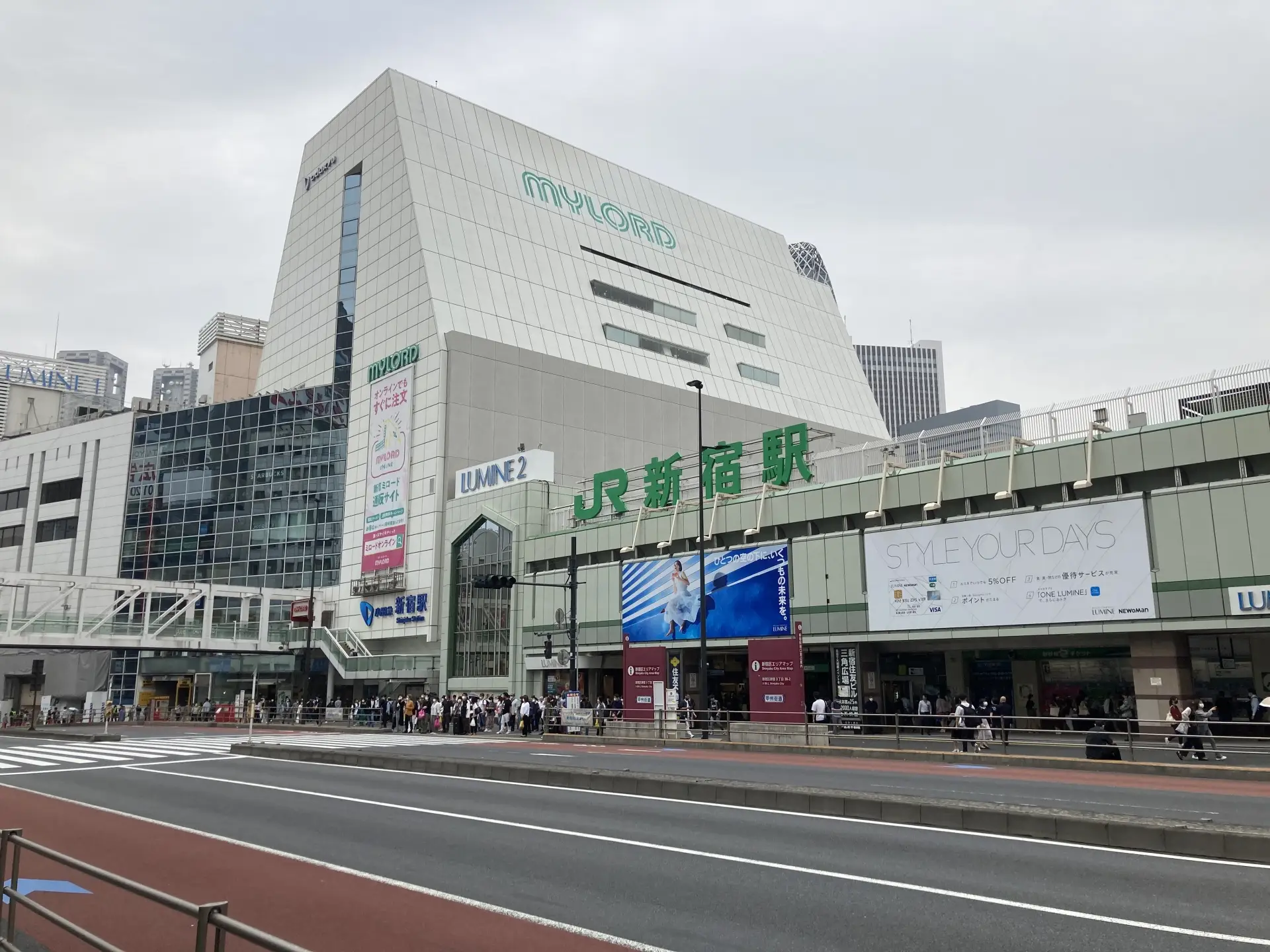
The journey from Shinjuku to Shinagawa Station via the JR Yamanote Line takes approximately 20 minutes. Trains run very frequently, making this one of the most reliable connections in Tokyo. The route passes through several major stations, including Harajuku and Shibuya, providing opportunities to explore different areas of the city.
Shinagawa Station to Key Destinations
To Ueno
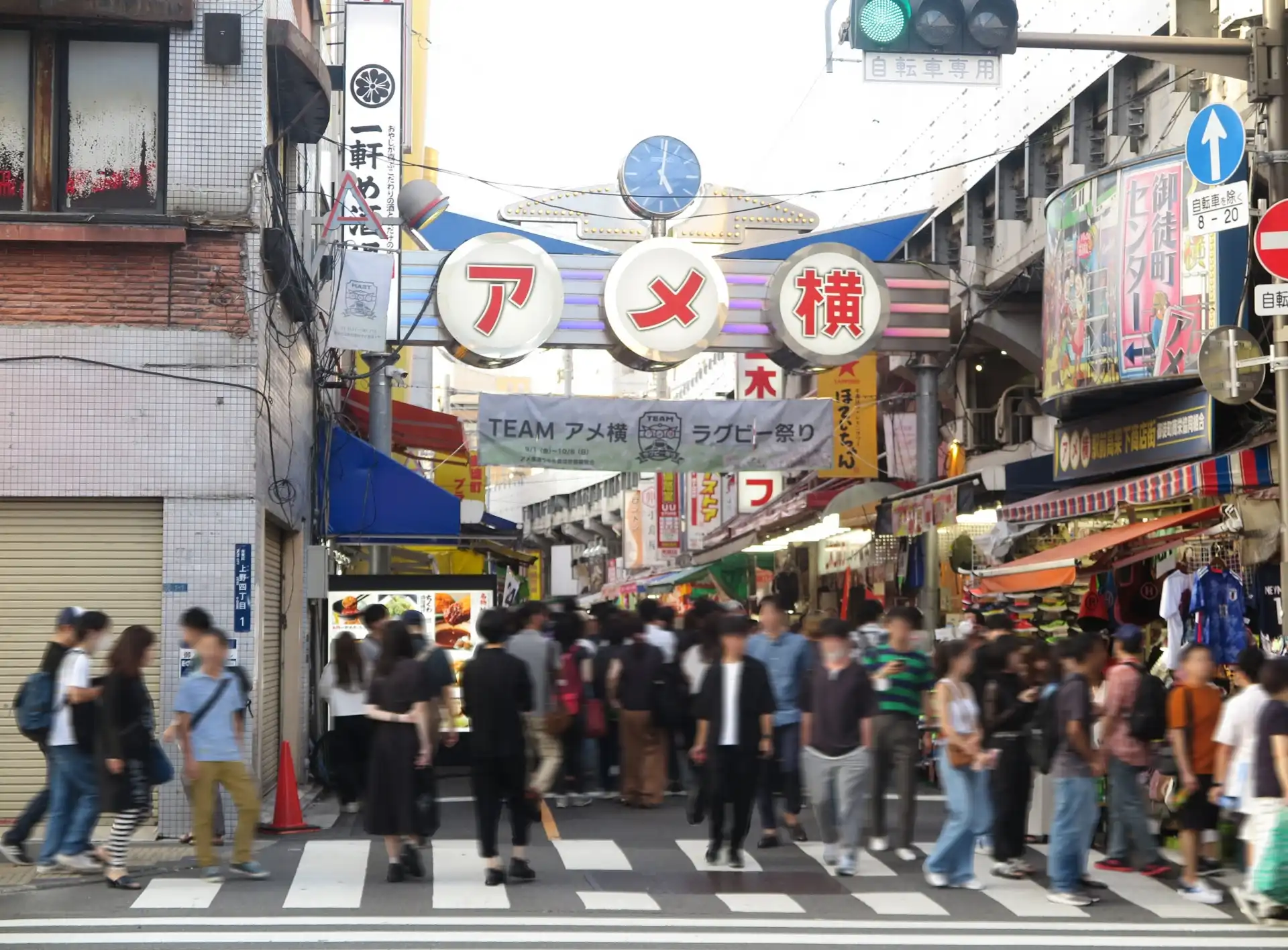
Reaching Ueno from Shinagawa Station is straightforward using the JR Yamanote Line. Take the Yamanote Line and travel clockwise around Tokyo's loop line to reach Ueno Station. The journey takes approximately 25 minutes and provides access to Ueno’s famous museums, parks, zoo, and the lively Ameyoko shopping street.
This route passes through several major stations including Tokyo, Kanda, and Akihabara, making it possible to explore multiple neighborhoods along the way if desired.
To Asakusa
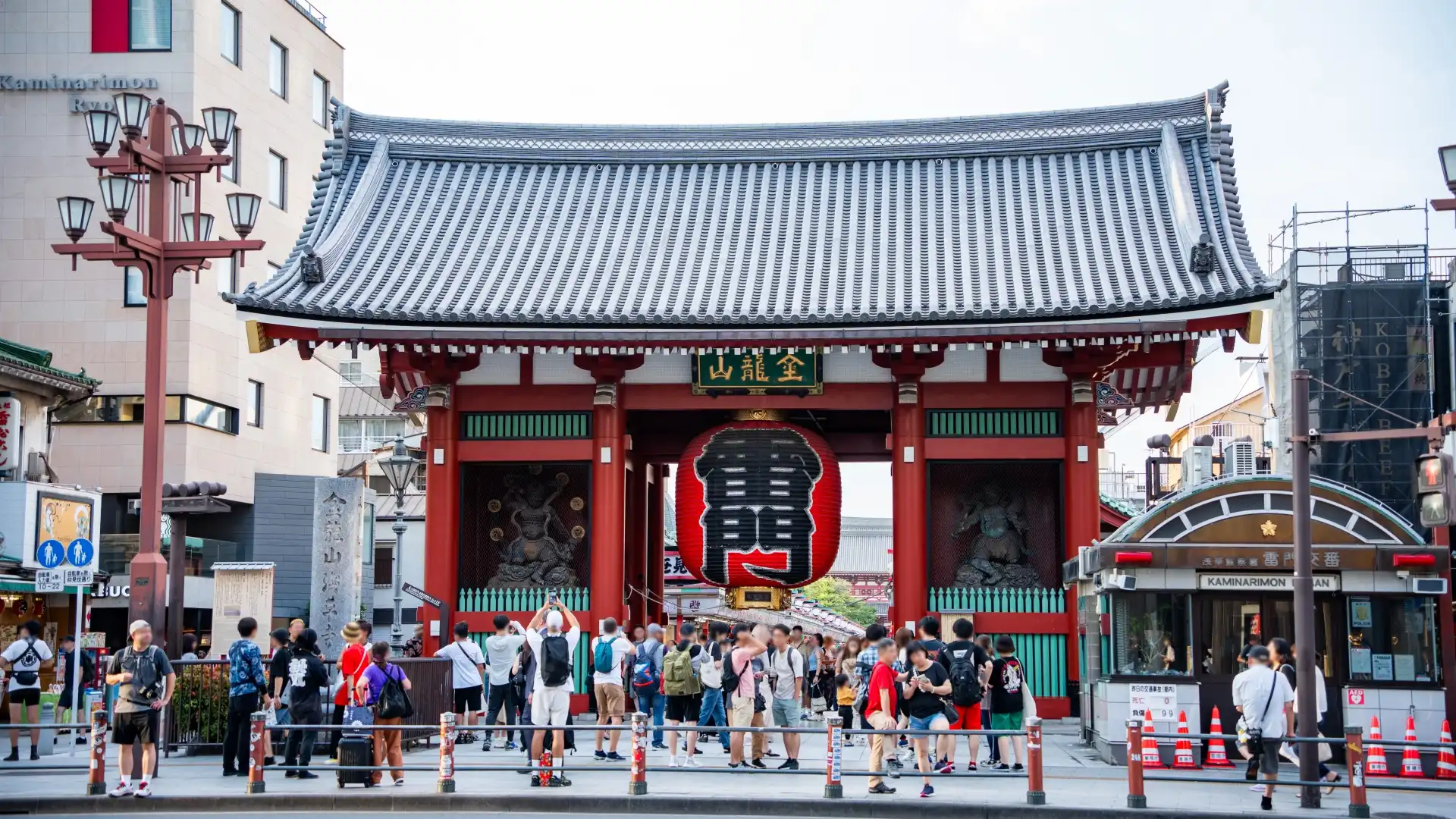
The journey from Shinagawa Station to Asakusa is convenient using the Keikyu Main Line, which connects directly to the Toei Asakusa Line. Take the Keikyu Line from Shinagawa Station, and the train will continue directly onto the Toei Asakusa Line without requiring a transfer. The total journey takes approximately 20 minutes.
This direct connection provides easy access to one of Tokyo's most traditional neighborhoods, home to the famous Senso-ji Temple and traditional shopping streets along Nakamise-dori.
To Mita, Onarimon, and Minato City
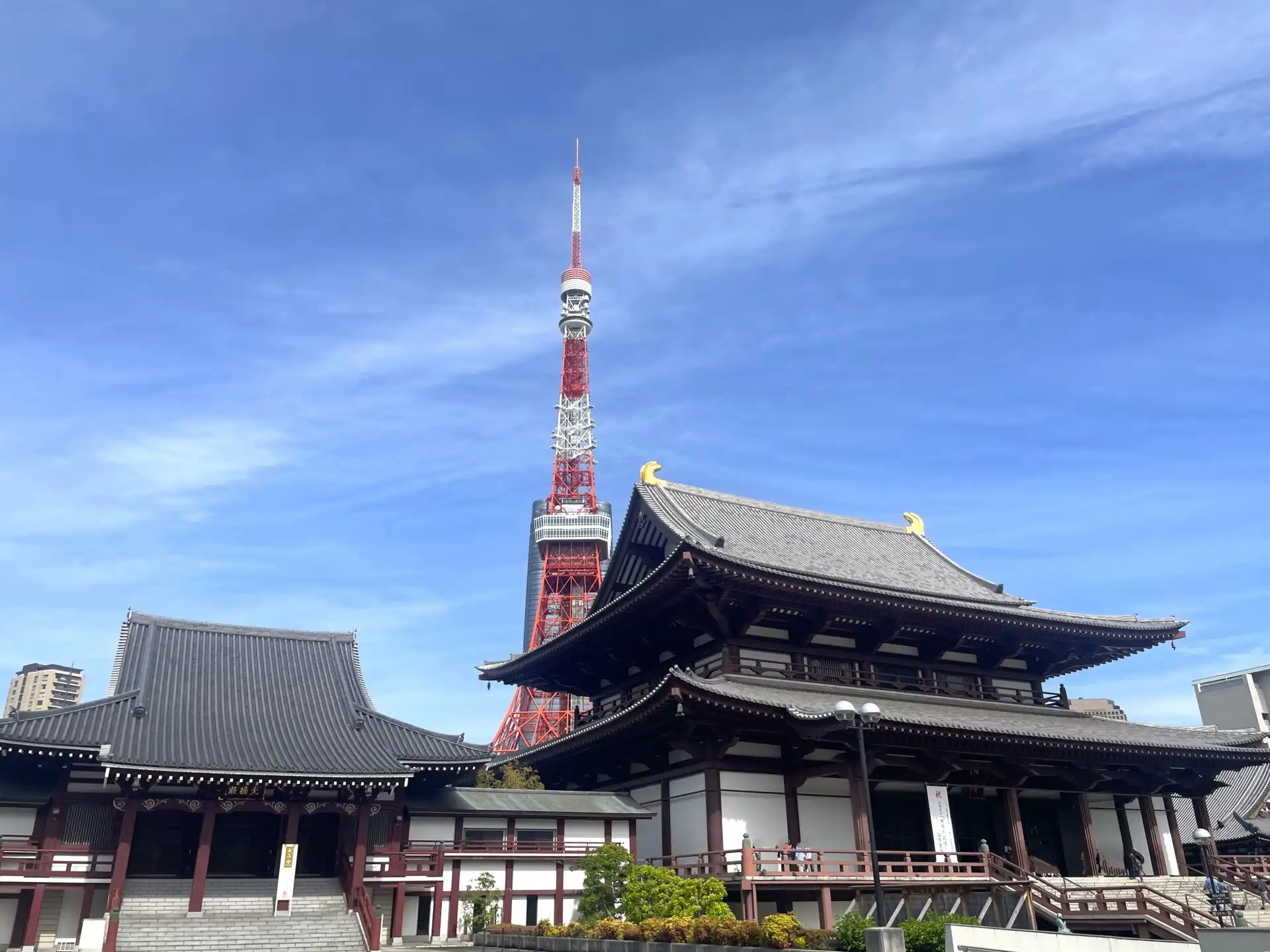
Reaching Mita Station from Shinagawa Station is straightforward using the Keikyu Main Line, which connects directly to the Toei Asakusa Line. The train will continue directly onto the Toei Asakusa Line without requiring a transfer, reaching Mita Station in approximately 5 minutes.
For Onarimon Station, first take the Keikyu Line to Mita Station as described above. Then transfer to the Toei Mita Line at Mita Station and travel one stop to Onarimon Station. The total journey takes approximately 10 minutes.
These connections provide access to Tokyo’s business district, various embassy locations, and major landmarks such as Tokyo Tower, which is just a short walk from Onarimon Station. This makes the route useful for both business travelers and tourists exploring Minato City.
Facilities and Support for Foreign Travelers
Coin Lockers
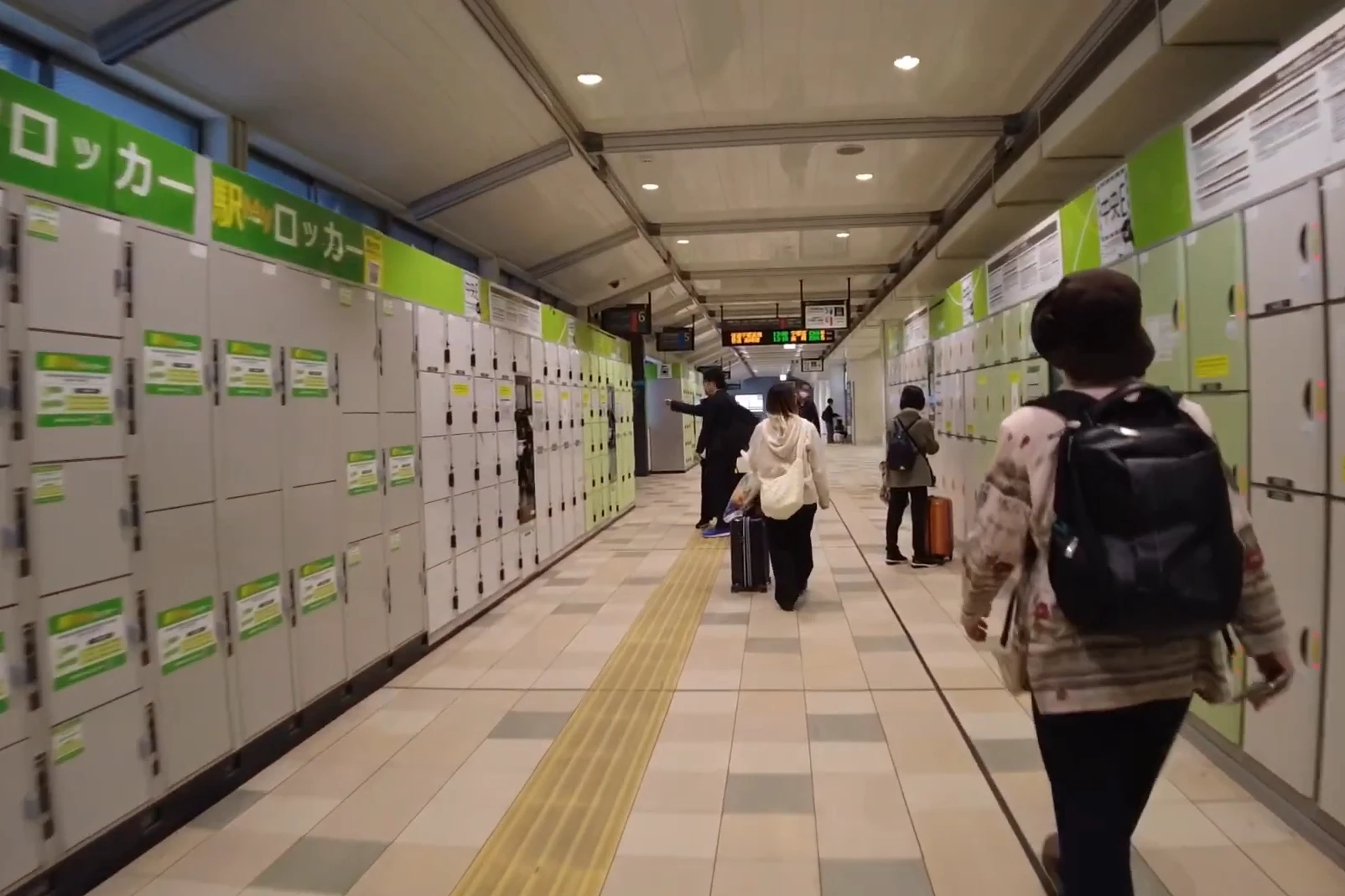
Shinagawa Station provides ample luggage storage with approximately 900 coin lockers available throughout the JR station complex. Lockers come in three sizes—small (ideal for day bags), medium, and large (suitable for suitcases). Most lockers accept both coins and IC cards like Suica or Pasmo for easy payment.
You can find coin lockers at various locations throughout JR Shinagawa Station, including:
- Outside the Shinkansen ticket gates
- Near the Konan (East) Exit
- Inside the Central Gate area
- Inside the North Gate area
These lockers are located both inside and outside ticketed areas, making them accessible whether you’re in transit or arriving at the station. They are especially useful for travelers with short layovers or those who want to explore the area hands-free.
Wi-Fi
Free Wi-Fi connectivity is available throughout Shinagawa Station. For travelers requiring constant connectivity throughout Japan, Japan Wireless offers comprehensive coverage that extends beyond major stations.
Japan Wireless eSIM provides an excellent alternative for compatible devices, offering immediate activation without physical SIM cards.
Tourist Information Center and Language Assistance
The Keikyu Tourist Information Center, located within the Keikyu Line section of Shinagawa Station, provides multilingual assistance and travel information. Staff members can help with route planning, ticket information, and general travel advice for the Tokyo area and beyond.
Multilingual signage throughout the station includes Japanese, English, Chinese, and Korean text, making navigation easier for international visitors. Electronic displays provide real-time information about train schedules and platform changes in multiple languages.
ATMs and Currency Exchange
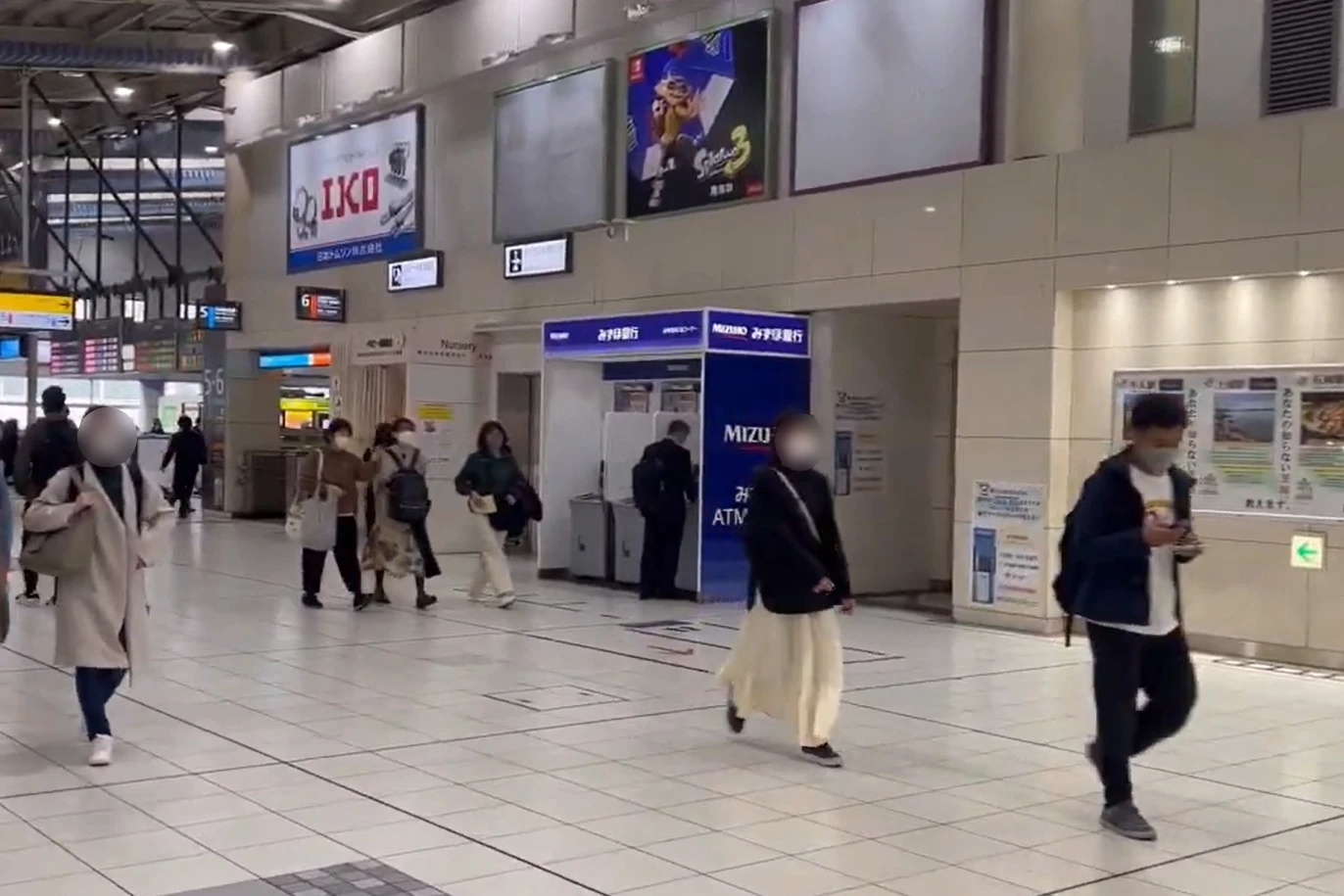
International ATMs are available at several locations within Shinagawa Station, including bank branches and convenience stores. These ATMs are generally reliable for foreign card withdrawals and are conveniently located throughout the station complex.
Currency exchange services are available for major world currencies, though rates may be better at dedicated exchange counters in nearby areas. Most station retailers accept major international credit cards, reducing the need for large amounts of cash.
Restaurants and Shops
Shinagawa Station offers a wide range of dining and shopping options for travelers. From quick bites to full meals and souvenirs, the station complex meets every need. Many shops and eateries are located both inside and outside the ticket gates.
Note that restaurants and stores can become crowded during lunchtime and early evening hours, so allowing extra time is recommended during peak periods.
ecute Shinagawa
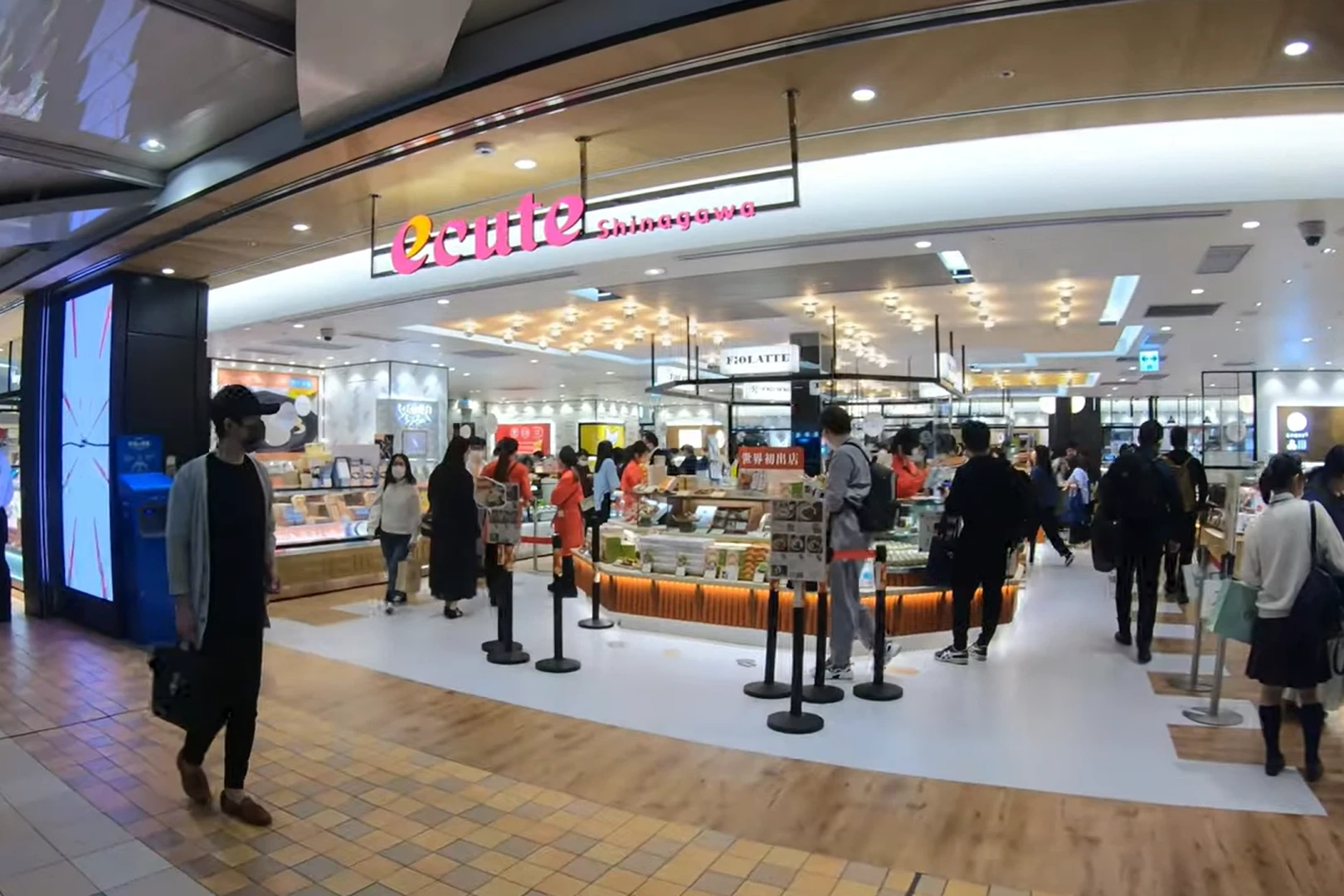
ecute Shinagawa is located within the ticketed area and features high-quality cafés, bakeries, and takeaway food counters—perfect for grabbing something before your train. The facility also offers unique gifts and regional sweets, including Tokyo exclusives, making it popular for souvenir shopping.
atre Shinagawa
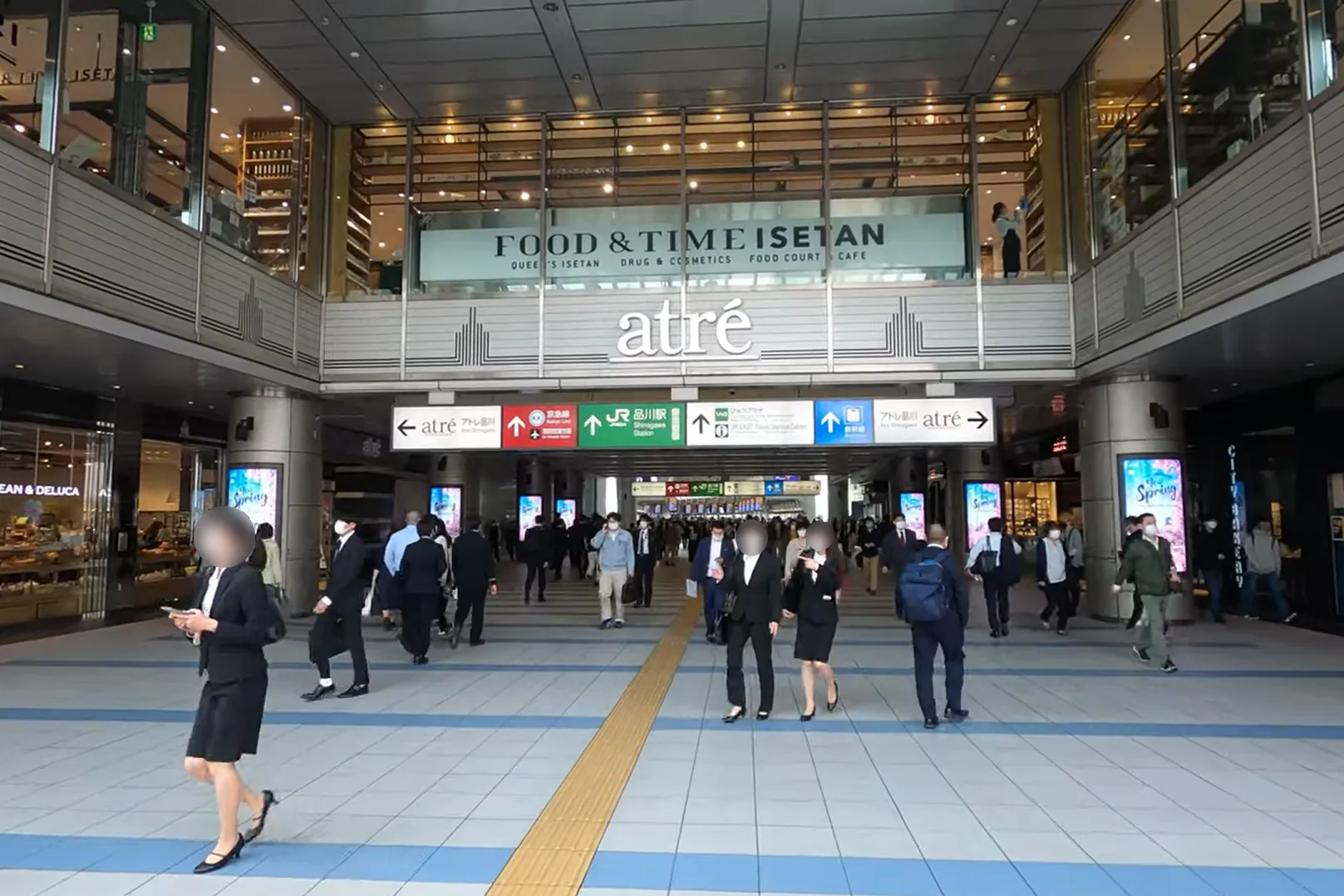
atre Shinagawa is situated on the Konan (East) side outside the ticket gates. This larger commercial complex offers restaurants ranging from casual Japanese cuisine to international dining, plus retail stores and a souvenir section with seasonal treats and local specialties.
Rest Spaces and Smoking Rooms
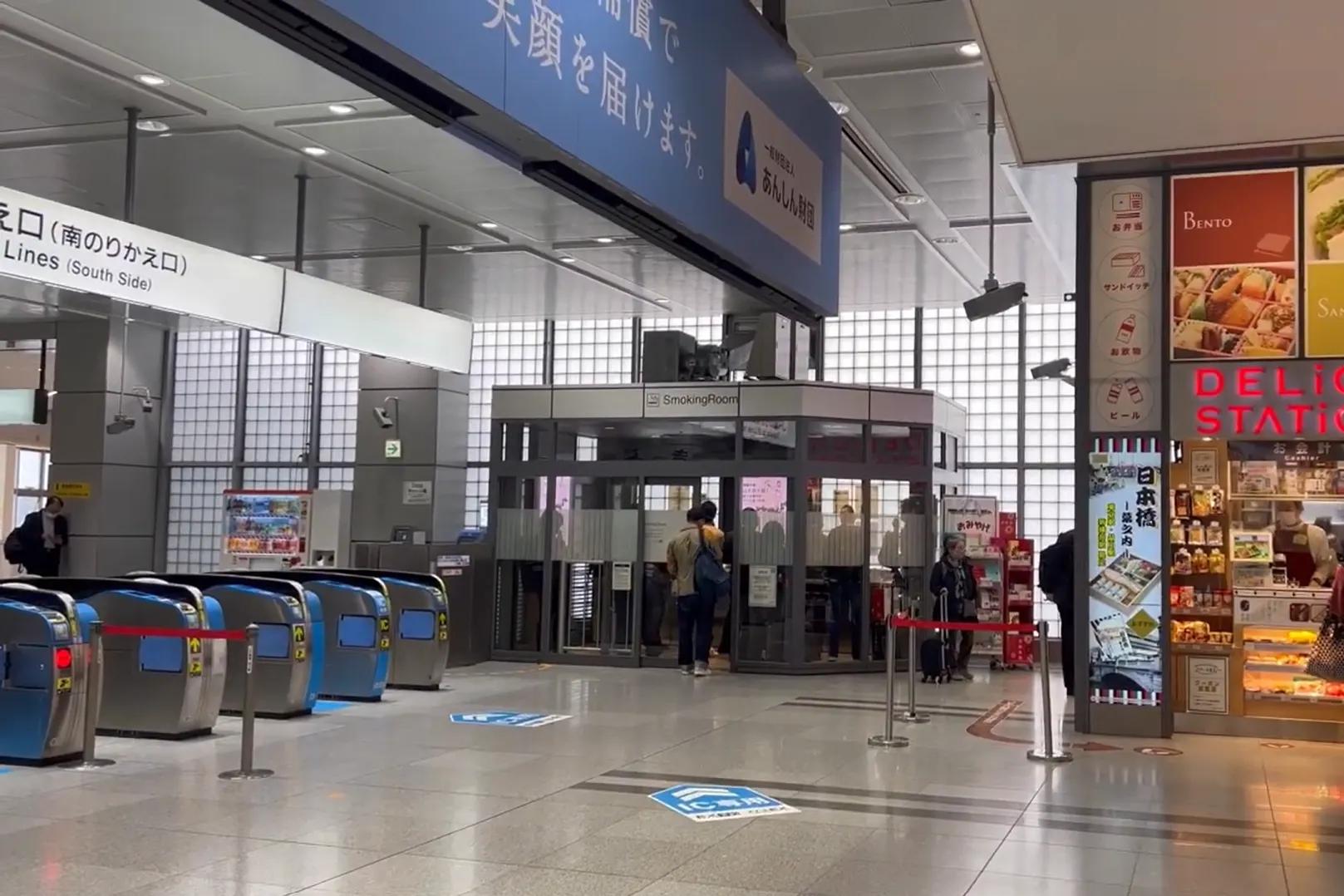
Shinagawa Station offers several rest areas for travelers. Inside the Shinkansen ticket gates, air-conditioned waiting rooms are located near the North Entrance and South Transfer Gate, providing quiet and comfortable seating. Basic benches are also available on the Shinkansen platforms (Tracks 21–24).
Many cafés throughout the station also provide relaxing seating for short breaks.
Designated smoking rooms are located outside the ticketed areas and must be used in accordance with station rules.
Nearby Attractions & Sightseeing
Maxell Aqua Park Shinagawa
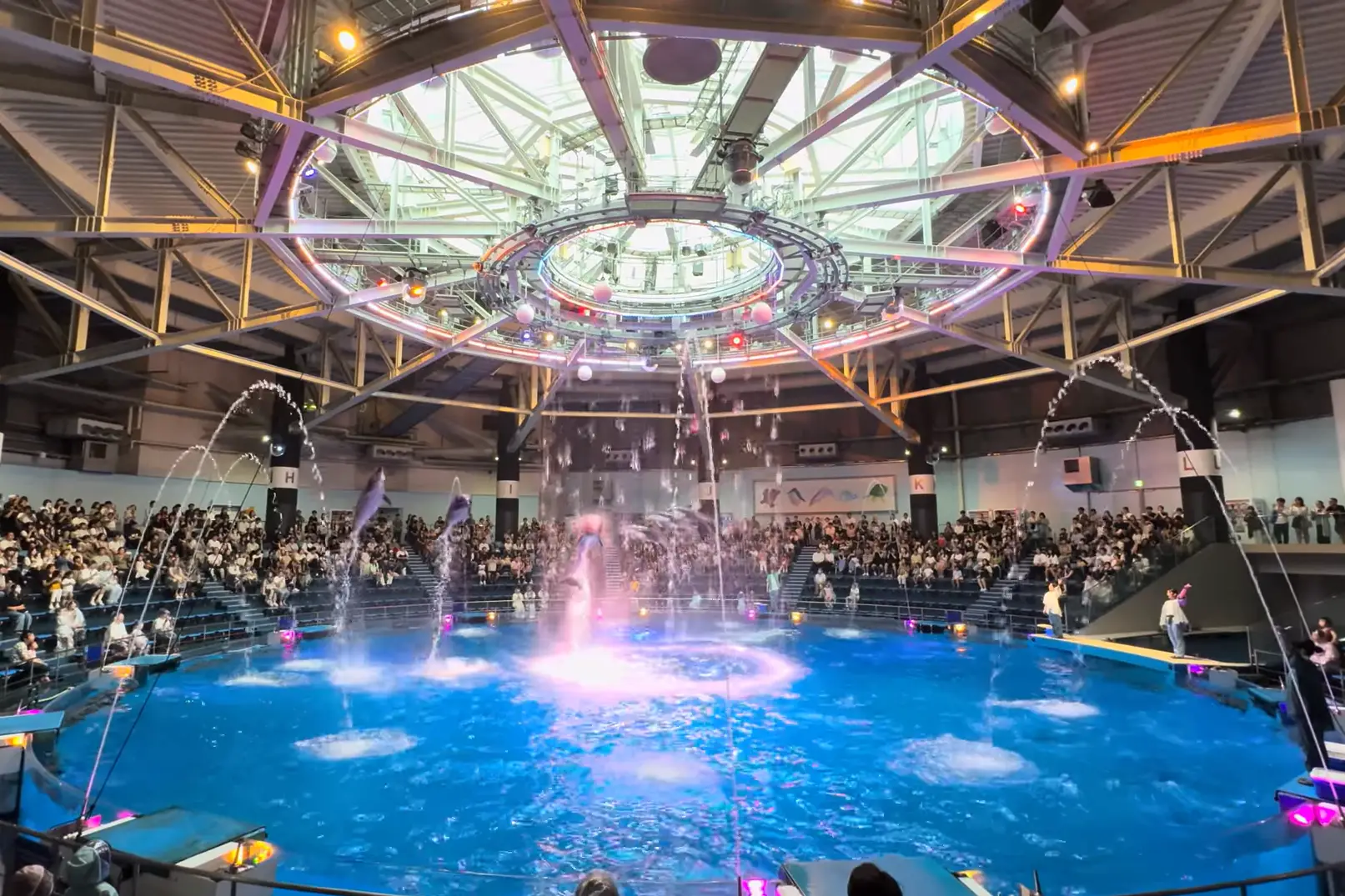
Located just a 2-minute walk from Shinagawa Station, this unique aquarium combines marine life with entertainment attractions. The facility features interactive exhibits and spectacular dolphin shows.
Shinagawa Shrine
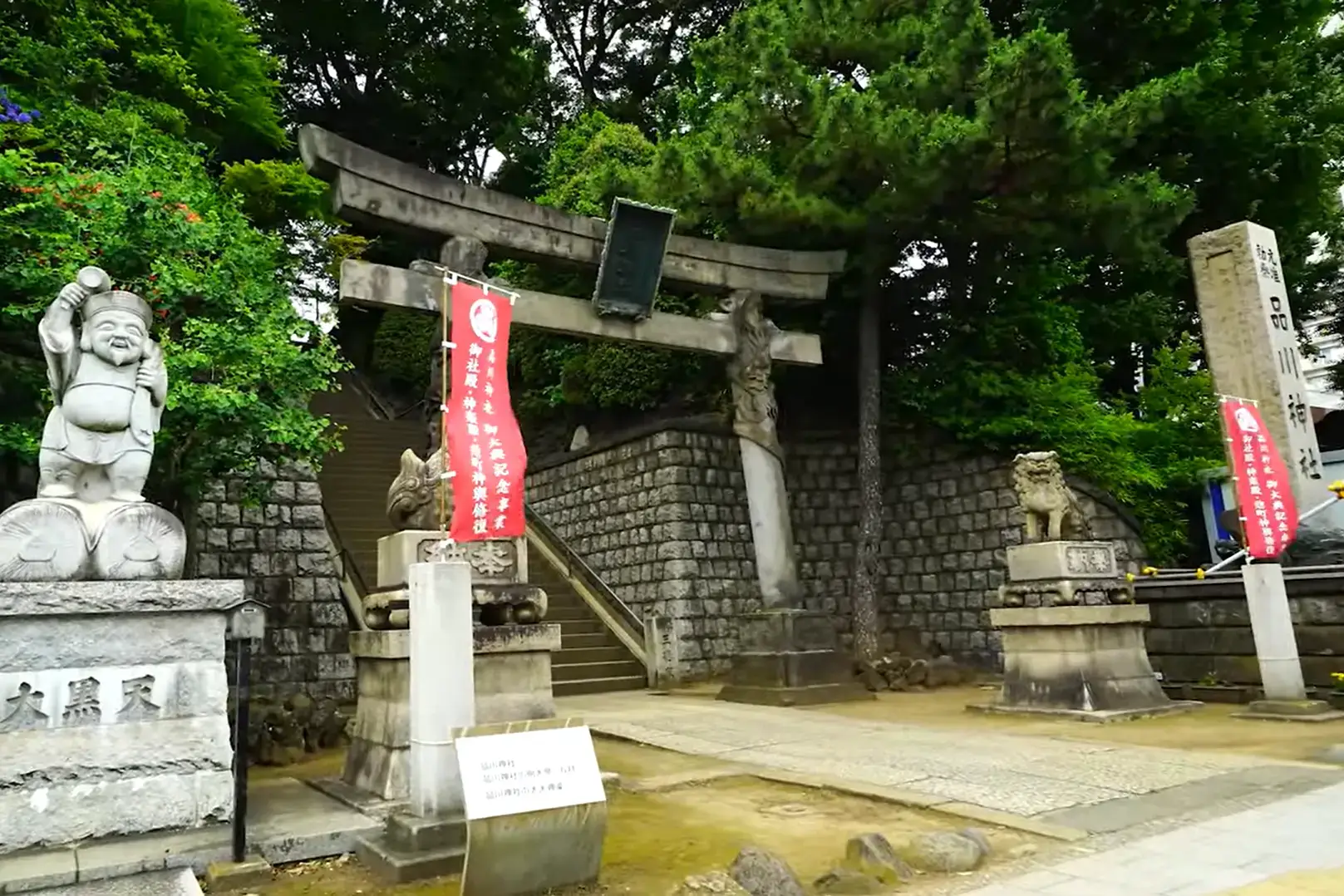
Shinagawa Shrine is a historic guardian shrine of the area, located about a 15-minute walk from Shinagawa Station. The peaceful shrine offers a tranquil escape from the bustling transportation hub.
Togoshi Ginza
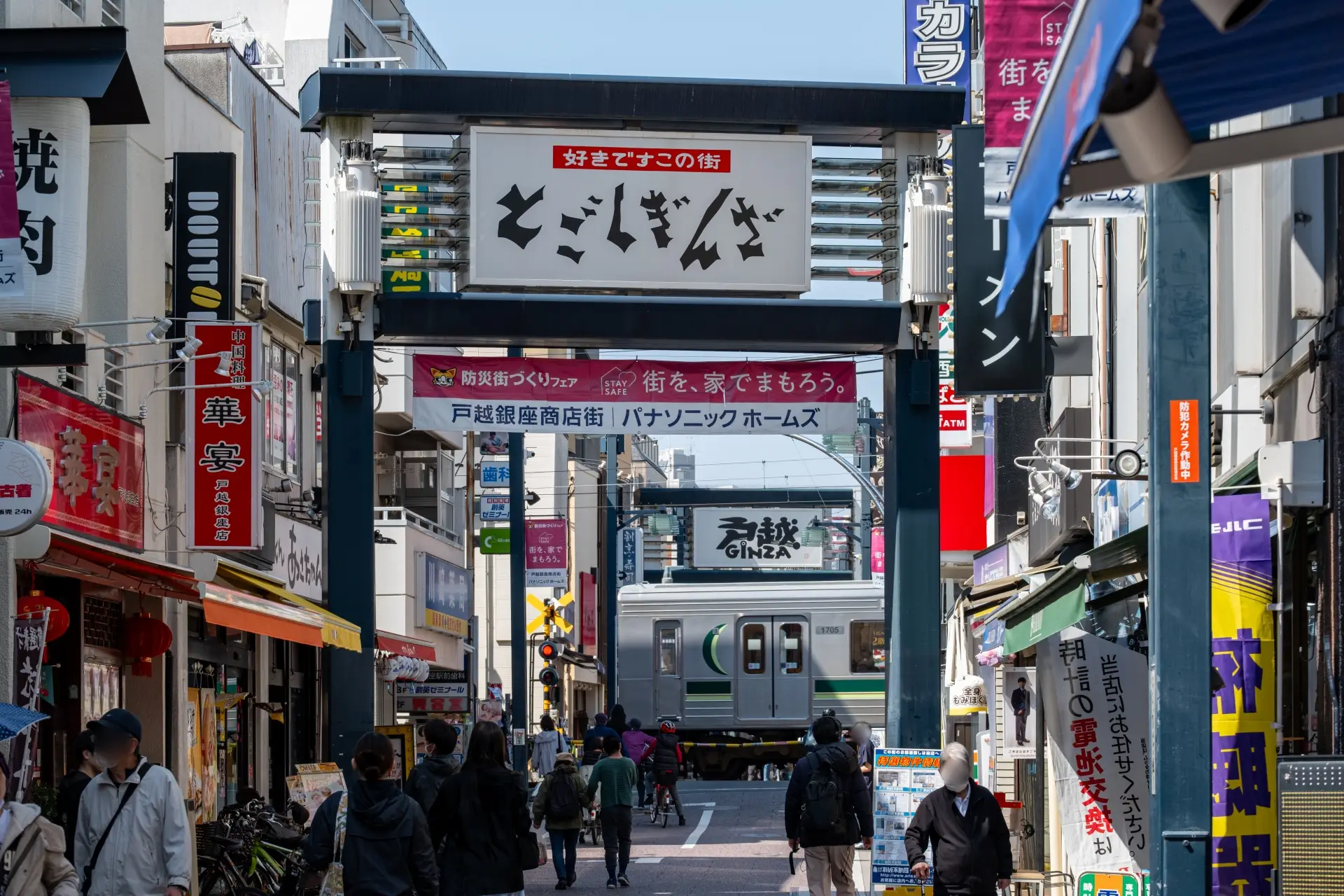
One of Tokyo's longest traditional shopping streets is just a short train ride away. This charming area features local shops, street food, and an authentic neighborhood atmosphere.
Tokyo Tower
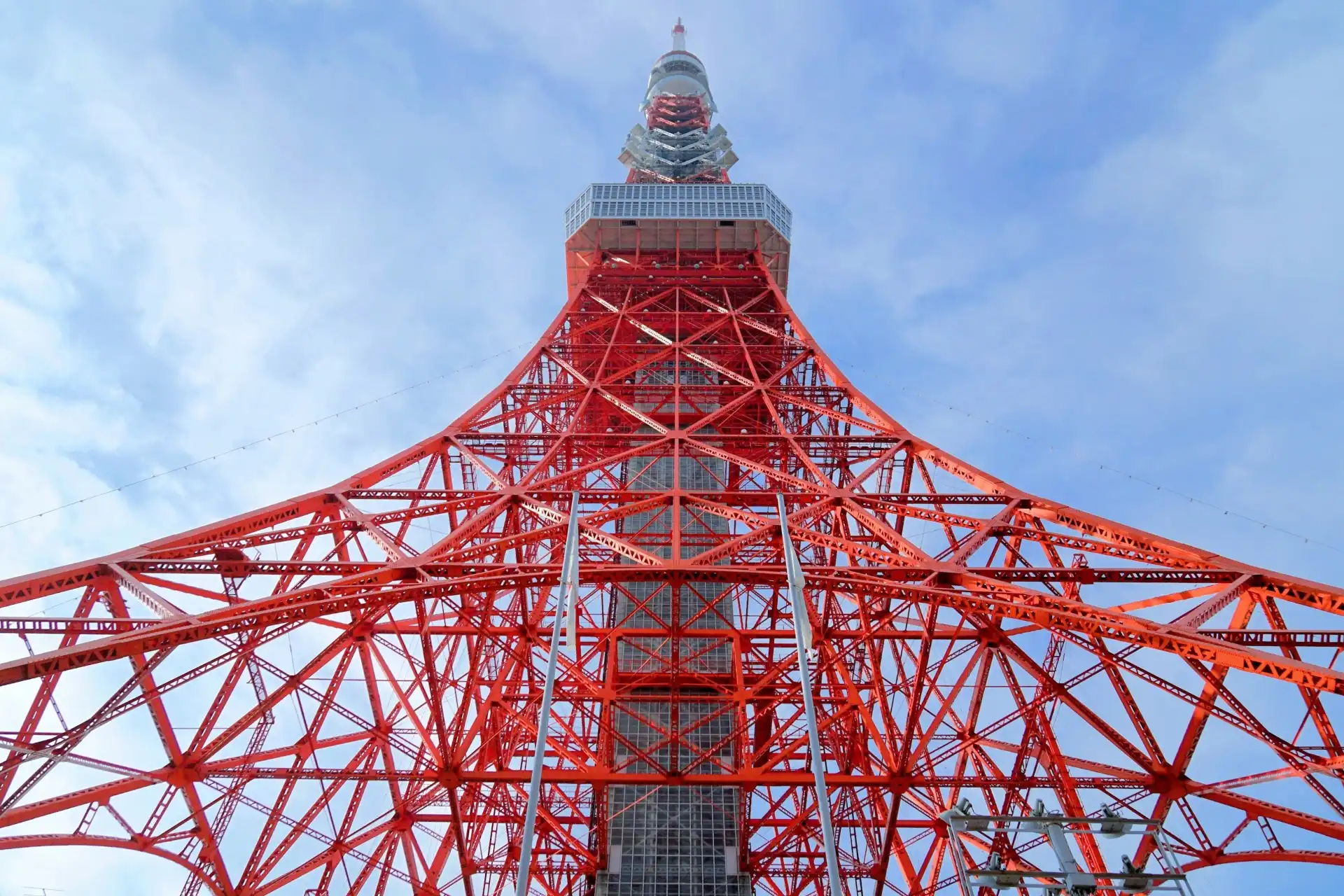
Tokyo's iconic landmark offers spectacular city views and is easily accessible by train from Shinagawa Station. The observation decks provide breathtaking panoramic views of the metropolis.
Tokyo Bay Cruise
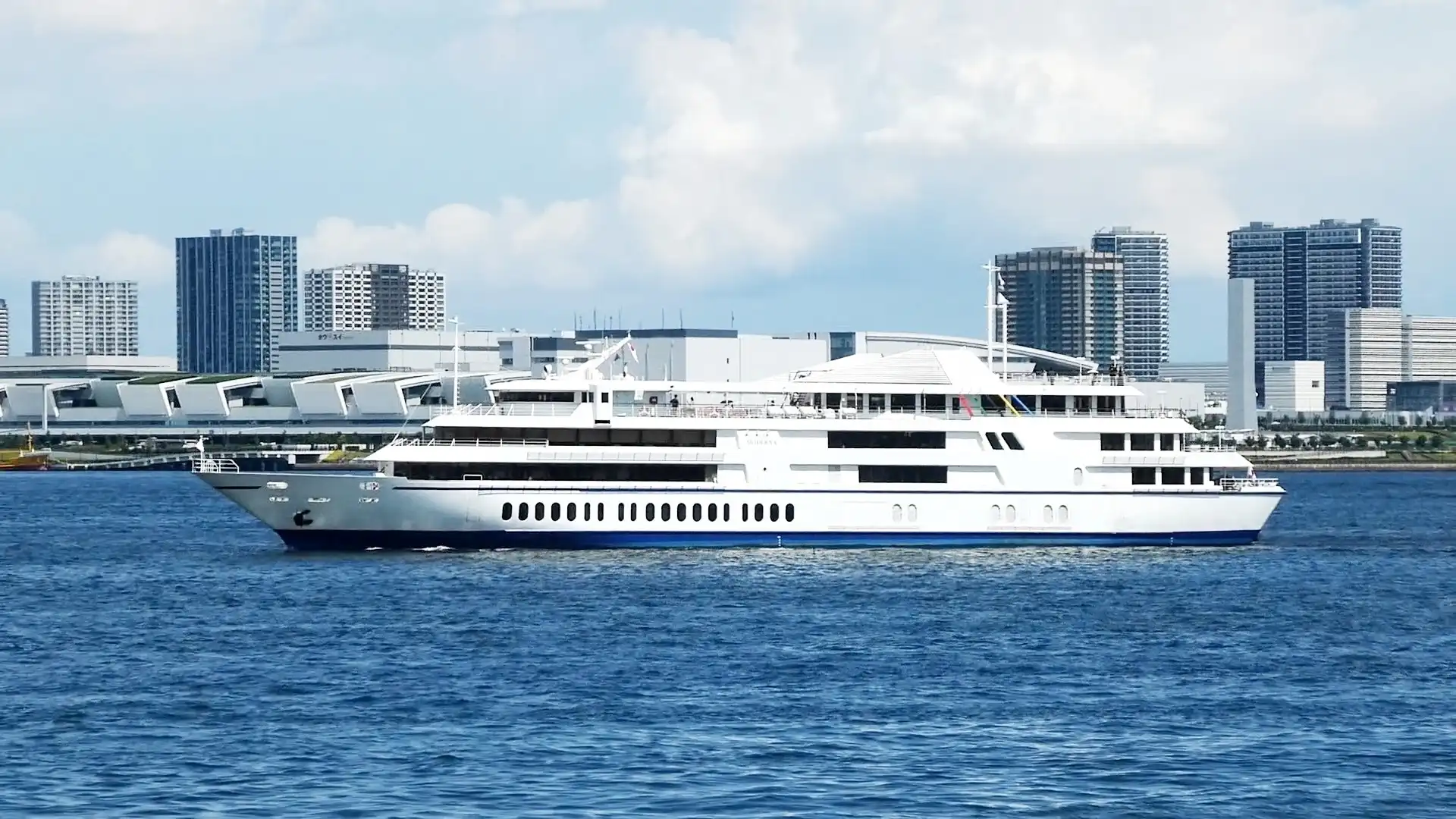
Enjoy stunning views of Tokyo's skyline and waterfront from the water. Various cruise options are available from nearby piers, offering both daytime and evening experiences.
Odaiba
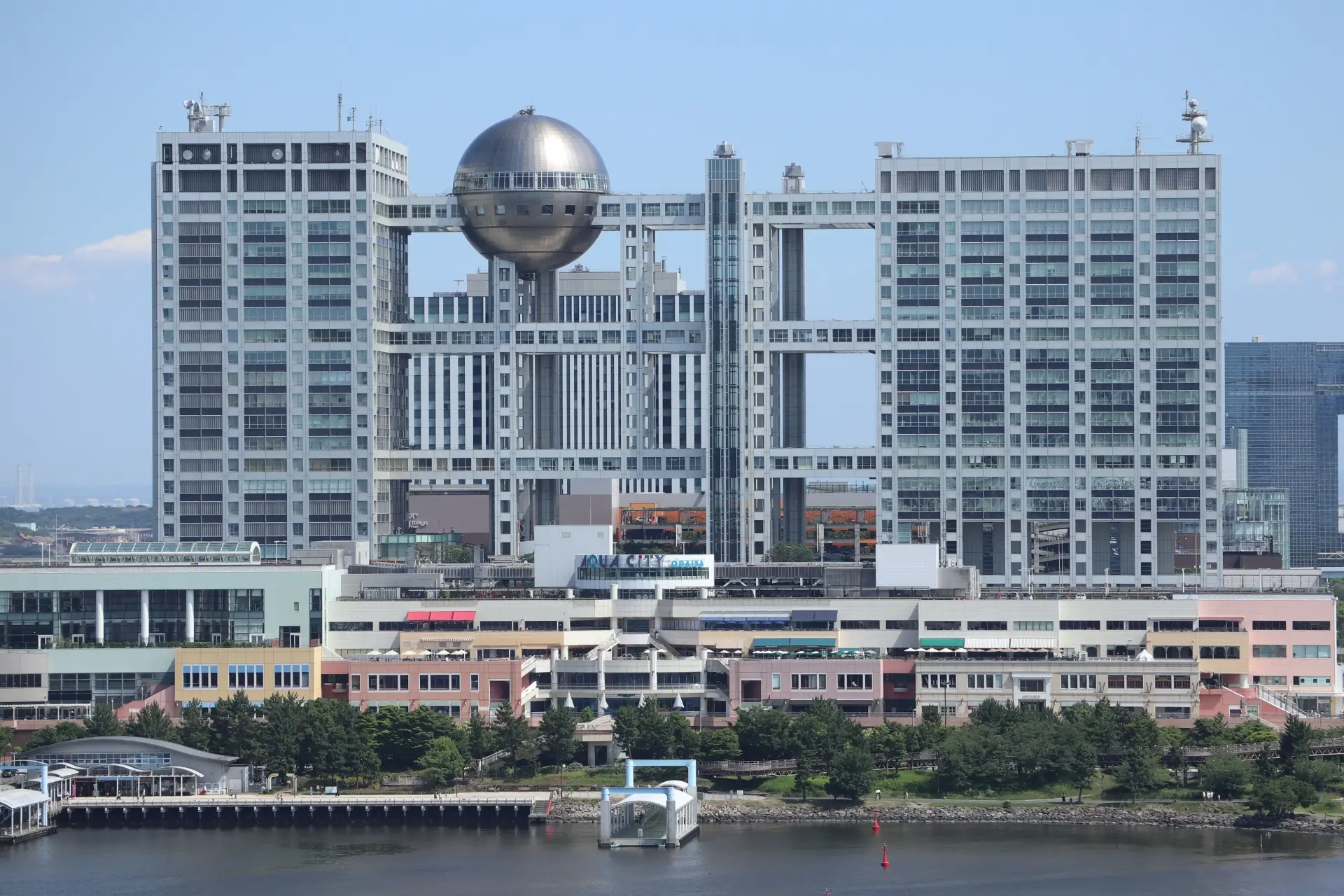
This futuristic entertainment island is easily accessible from Shinagawa with a transfer to the Rinkai Line at nearby stations such as Oimachi. The area features shopping malls, entertainment facilities, and Tokyo's replica Statue of Liberty.
Coastal Yokohama
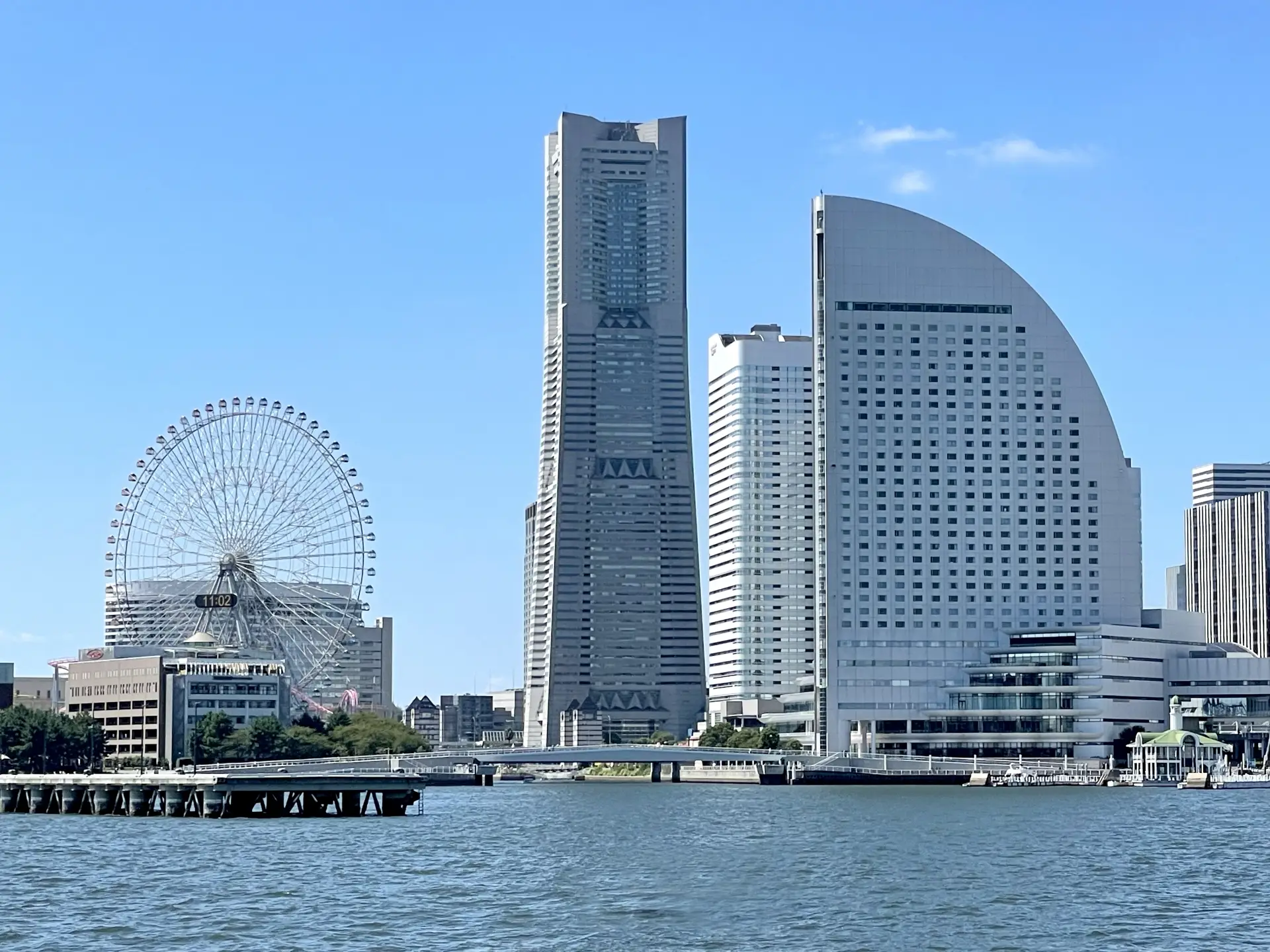
Japan's second-largest city is just 20 to 30 minutes away by train, offering harbor views and international cuisine. The historic port city combines modern attractions with cultural heritage sites.
Historic Kamakura
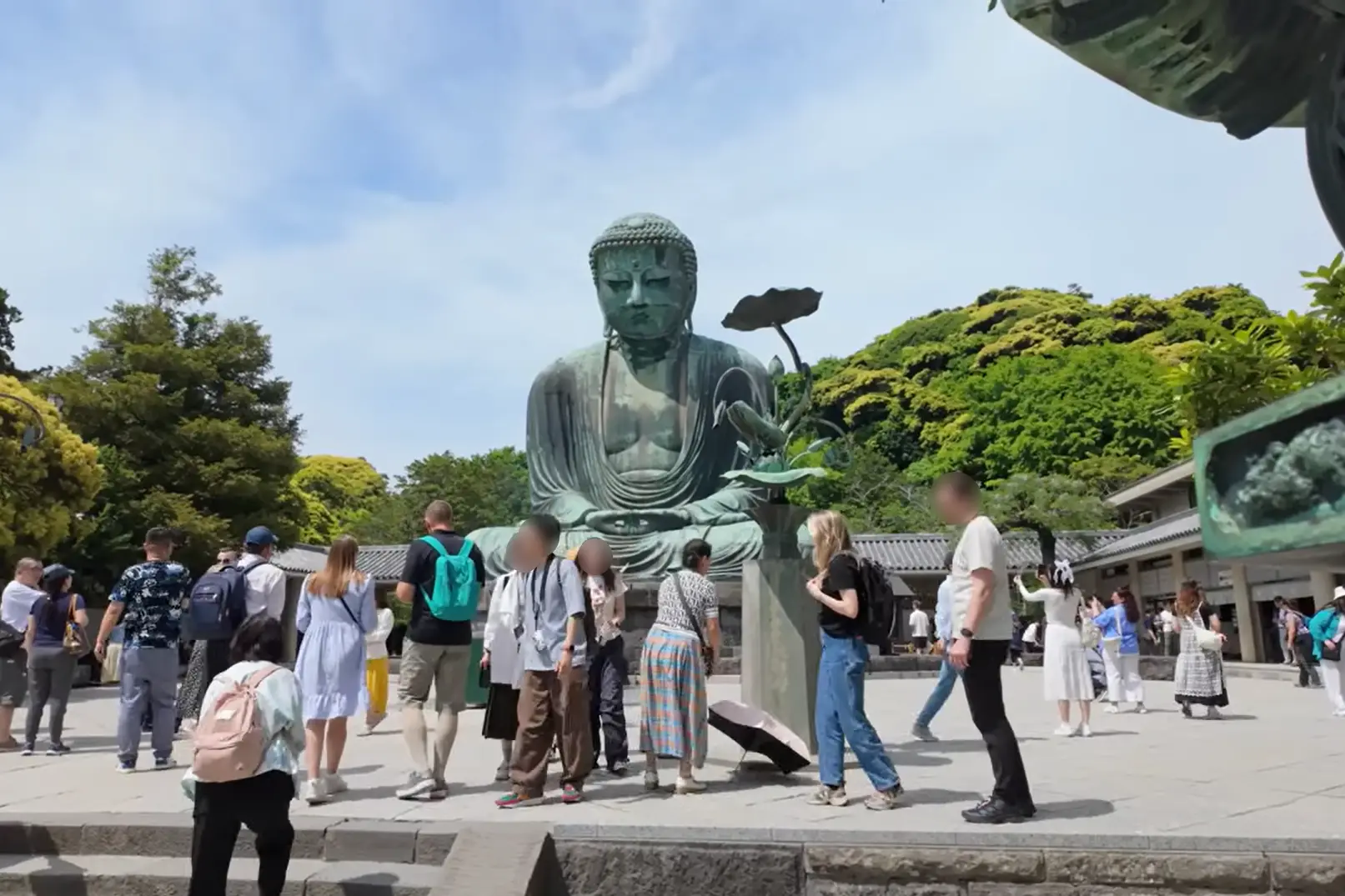
Accessible in under an hour, this ancient capital features magnificent temples and the famous Great Buddha statue. The historic city offers a perfect blend of spiritual sites and natural beauty.
Plan Your Visit
Shinagawa Station serves as a highly convenient starting point for traveling across Japan. With its compact layout, multilingual signage, modern facilities, and direct access to Haneda Airport, the station is especially well-suited for international travelers using the Shinkansen for the first time.
For the smoothest experience, we recommend booking your Shinkansen tickets in advance through Japan Bullet Train. The online platform offers multilingual support, accepts international credit cards, and provides a QR code for easy ticket pickup at the station.
Whether you're heading to Kyoto, Osaka, or exploring Tokyo's surrounding areas, Shinagawa Station provides everything you need for a smooth, stress-free journey.

